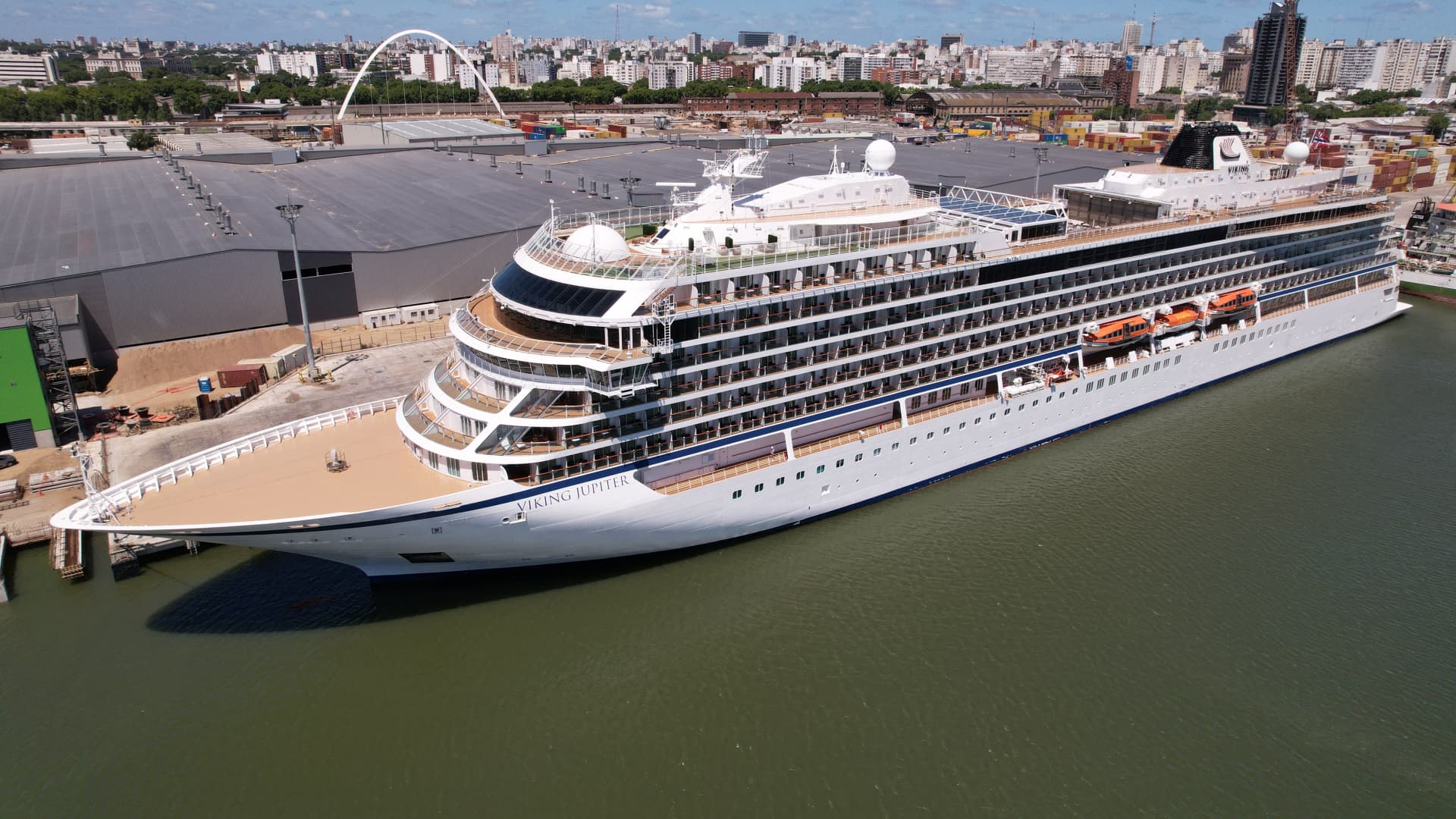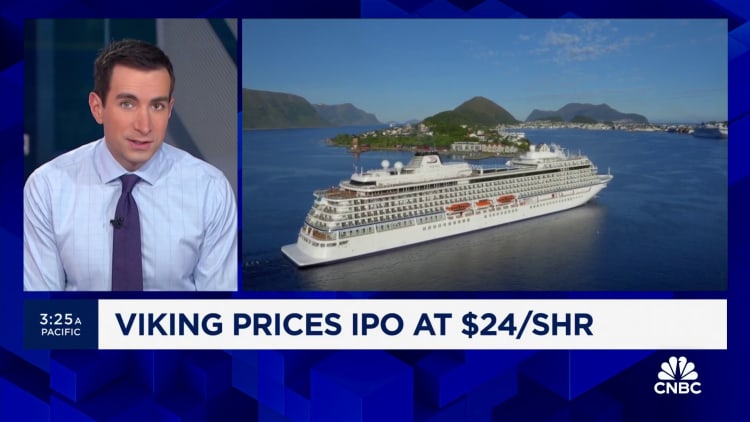Viking shares rise more than 10% after cruise line operator’s market debut


Aerial view of the Viking Jupiter cruise ship anchored in the port of Montevideo, on January 5, 2022.
Ivan Pisarenko | AFP | Getty Images
Viking is not your typical cruise operator.
Aboard its smaller, upscale vessels, you won’t find any kids. In fact, the cruise line doesn’t hide the fact that it is going after the high-income baby boomer.
Casinos? Not on these cruise ships.
In Viking Holdings’ prospectus, the company said its cruises are for the “thinking person,” underscoring its efforts to appeal to travelers seeking adventure and new experiences.
“They have the money, they have the time and, in my belief, the moment you try to do everything for everybody, you know what happens? You do nothing well. So we are very, very clear focused,” Torstein Hagen, CEO and chairman of Viking, told CNBC.
The luxury cruise line was targeting a $10.4 billion valuation in its initial public offering on the New York Stock Exchange on Wednesday, making it the third-largest cruise operator after Royal Caribbean and Carnival. Norwegian Cruise Line is the fourth largest. Viking started trading Wednesday at $26.15 a share under the ticker “VIK” after pricing at $24 a share.
Viking upsized its IPO after existing shareholders decided to sell an additional 9 million shares amid strong demand from mutual fund investors, according to a source familiar with the situation.
In 1997, Viking had four ships. It has quickly grown its fleet to 92 vessels, 80 of which are river-based ships that travel down the world’s biggest rivers, including the Seine in France and the Nile in Egypt.
“We’re different because when you talk about the big cruise lines, they’re large in the Caribbean,” Hagen said. “We have a tiny sliver in the Caribbean. The rest is Europe.”
The timing of Viking’s IPO coincides with a strong rebound in cruise bookings. On April 25, Royal Caribbean raised its guidance for 2024 amid a bright outlook for the sector.
“Cruising has really come into the forefront as a competitive choice in travel,” Jason Liberty, CEO of Royal Caribbean, said to CNBC in a recent interview. “The overall travel industry is $1.9 trillion. The cruise industry is $56 billion of that. I think cruising is at a much different level than it was pre-pandemic.”
While the company’s prospectus showed Viking brought in $4.71 billion in sales in 2023, it did report a net loss for the year. What is getting investors excited is the company’s revenue per passenger of $7,251, which is much higher than that of any other publicly traded cruise line. Viking’s premium price point allows it to make more money on each customer.
Investors will also be looking for details on Viking’s expansion plans. Earlier this month, Norwegian Cruise Line said it ordered eight new ships scheduled for delivery over the next 12 years.
Carnival, Royal Caribbean and MSC Cruises all have robust portfolios, which has raised concerns of overcapacity weighing on demand. But for now, the industry is focused on how well demand has rebounded from the pandemic and that, even with higher prices, cruising is still cheaper on average than hotel vacations.
UBS leisure analyst Robin Farley said land-based hotel rates are 25% higher than in 2019. During that same time frame, cruise line rates are up 10%.
“The gap between cruising and hotels is wide. That makes cruise compelling right now,” Farley said.









